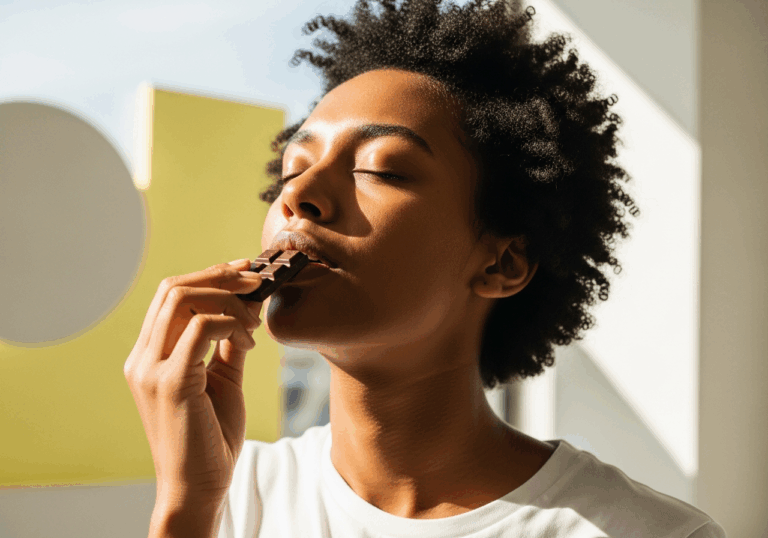Science-Backed Tips
Heavier Yogurt Containers Boost Satiety
71g heavier containers increase fullness perception by 25%
📊 Did you know?
💡 Why It Matters
1️⃣
Enhancing satiety perception can aid in weight management strategies.
2️⃣
Improved sensory satisfaction may lead to reduced overall food intake.
3️⃣
Understanding tactile influences on eating can inform healthier packaging designs.
✅ Try These Micro-Tips
🎯
Choose yogurt in heavier containers to enhance fullness perception.
🎯
Experiment with different container weights to find what feels most satisfying.
🎯
Incorporate tactile elements in meals to improve overall eating experience.
🎯
Consider the weight of food packaging when making dietary choices.
📚 The study
This finding is significant as it highlights the powerful role that tactile cues, such as the weight of a container, can play in enhancing our sensory satisfaction while eating.
Understanding how our senses interact can be a game-changer for weight management strategies. By improving our perception of fullness, we may be able to reduce overall food intake without sacrificing enjoyment.
Moreover, these insights can inform healthier packaging designs that not only appeal to our taste buds but also contribute to a more satisfying eating experience.
So next time you reach for a yogurt, consider the weight of the container— it might just make your snack feel more fulfilling!
❓ Frequently Asked Questions ❓
Learn more
How does container weight affect satiety perception?
Heavier containers can enhance the perception of fullness, making food seem more satisfying. In a study, yogurt consumed from a container that was about 71 g heavier was rated as ~25% more filling by participants.
What was the objective of the yogurt container weight study?
The objective was to test how the weight of the container influences satiety perception. Researchers aimed to understand the relationship between tactile cues and taste satisfaction.
What were the main findings of the study on yogurt consumption?
Participants reported feeling ~25% fuller when consuming yogurt from a heavier container. This suggests that tactile elements can significantly impact sensory satisfaction and satiety.
How can understanding tactile influences on eating help with weight management?
By enhancing satiety perception through tactile cues, individuals may reduce overall food intake. This can be an effective strategy in managing weight and promoting healthier eating habits.
What practical advice can be derived from the study’s findings?
Choosing yogurt in heavier containers can enhance the perception of fullness. Experimenting with different container weights may help individuals find what feels most satisfying.
Why is sensory satisfaction important in dietary choices?
Improved sensory satisfaction can lead to reduced overall food intake, aiding in weight management. It emphasizes the importance of the eating experience beyond just taste.
How can packaging design influence eating habits?
Incorporating tactile elements into food packaging can improve the overall eating experience. This understanding can inform healthier packaging designs that enhance satiety perception.
What role does tactile feedback play in eating experiences?
Tactile feedback can enhance the perception of taste and fullness, contributing to a more satisfying meal. This interplay between touch and taste is crucial for overall sensory satisfaction.
Can the weight of food packaging affect dietary choices?
Yes, the weight of food packaging can influence how filling a food item is perceived to be. Consumers may benefit from being mindful of packaging weight when making dietary choices.
What should consumers consider when choosing yogurt products?
Consumers should consider selecting yogurt in heavier containers to enhance their fullness perception. This simple choice can contribute to a more satisfying and potentially healthier eating experience.



